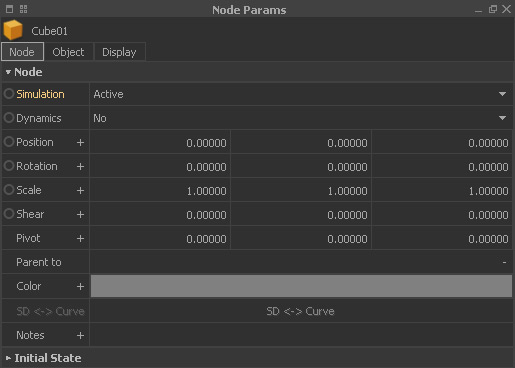/
Simulation States: Basics
Simulation States: Basics
Sometimes it is necessary to exclude a scene element from a simulation temporarily. This is often the case with helper objects, emitters, or daemons. RealFlow provides an one-click method for changing between different simulation states. Of course, these state can be animated and this way it is possible to activate a node at any time during simulation.
The Rocket Icon
- A node's simulation state is represented by a rocket icon. This icon can be found in the icon bar, but also in the “Nodes” panel, where every entry has its own rocket symbol.
- Click on the icon to switch between “Active” (green), “Inactive” (red), and “Cache” (yellow).
- “Cache” requires an already existing simulation. When enabled RealFlow will read the simulated data from disk. → Cached nodes are able to influence other active nodes/particles, but they cannot be influenced themselves.
- Multi-node selections are allowed and you can change the state of several nodes at once.
The “Simulation” Parameter
- This parameter is located here: Node Params > Node > Simulation
- “Simulation” represents the states of the rocket icon: when the rocket is red “Simulation” will be set to “Inactive”, for example.
In contrast to the icon, the parameter can be animated:
- Right-click on “Simulation” and choose “Edit Curve...”
- Go to the empty line at the bottom of the appearing → “Curve Editor”. There, an → expression can be added – this is the most effective way of animating simulation states.
- Change from active to inactive at a certain frame, e.g. 50:
if(f>49,0,1) - Change from inactive to active at frame 50:
if(f>49,1,0) - Change from cache to inactive at frame 50:
if (f>49,0,2)
These are the numerical representations of the simulation states:
- 0 = inactive
- 1 = active
- 2 = cache
It is also possible to define a point in time in seconds instead of frames. In the following expression, the state is changed from active to inactive at t = 2.5 seconds:
if(t>2.5,0,1)


